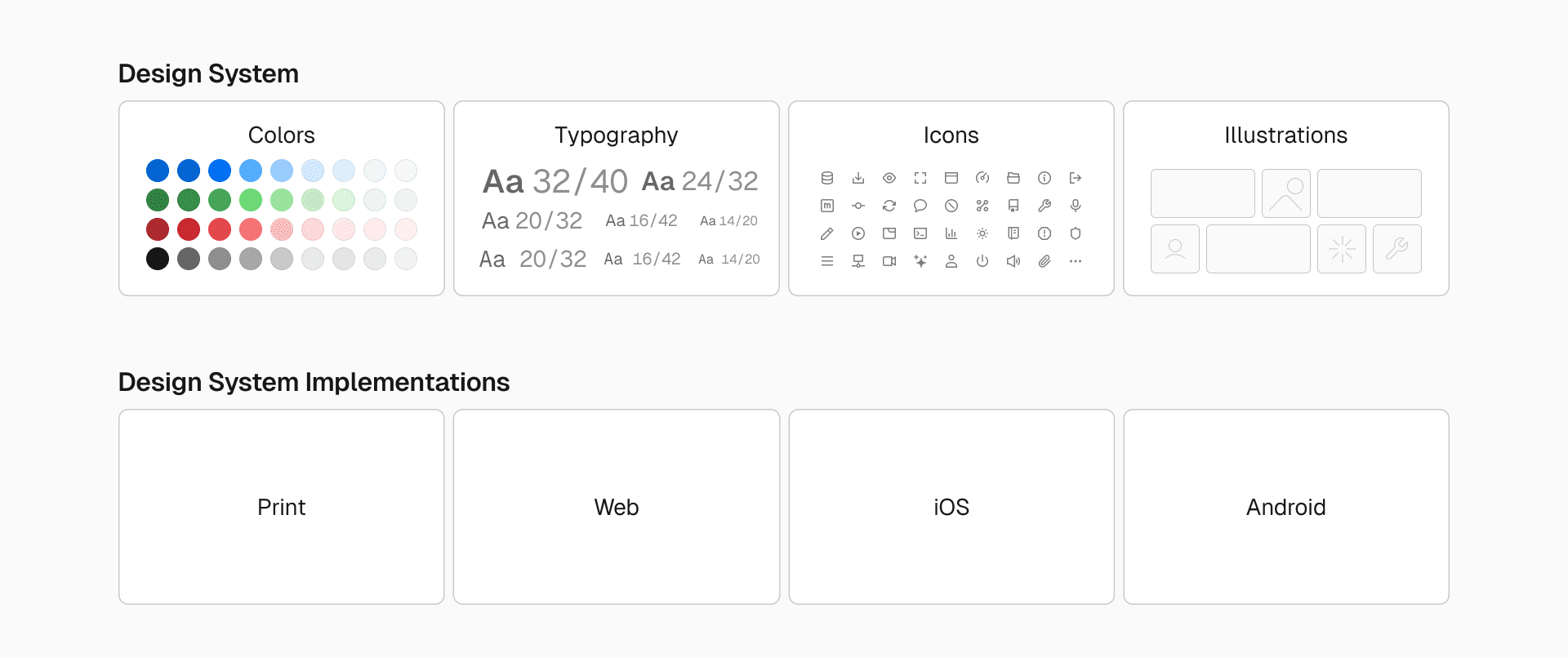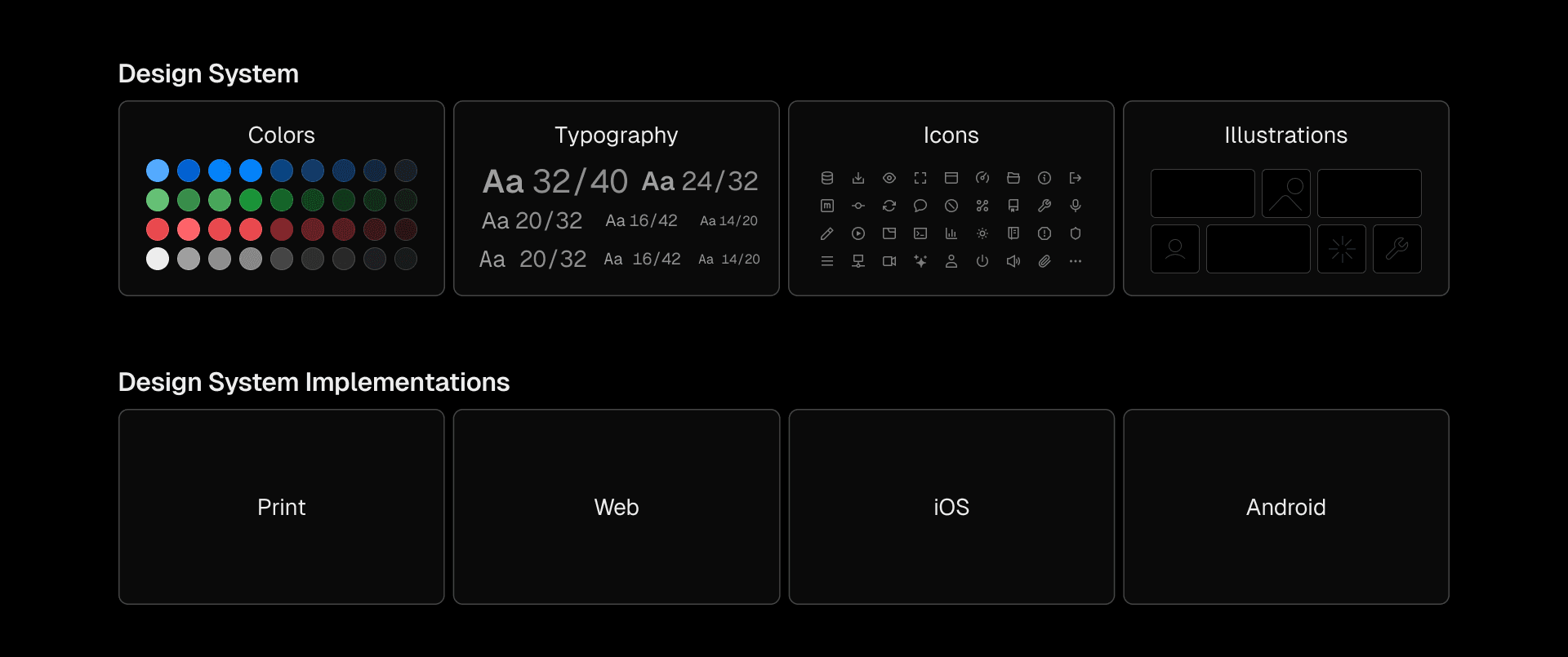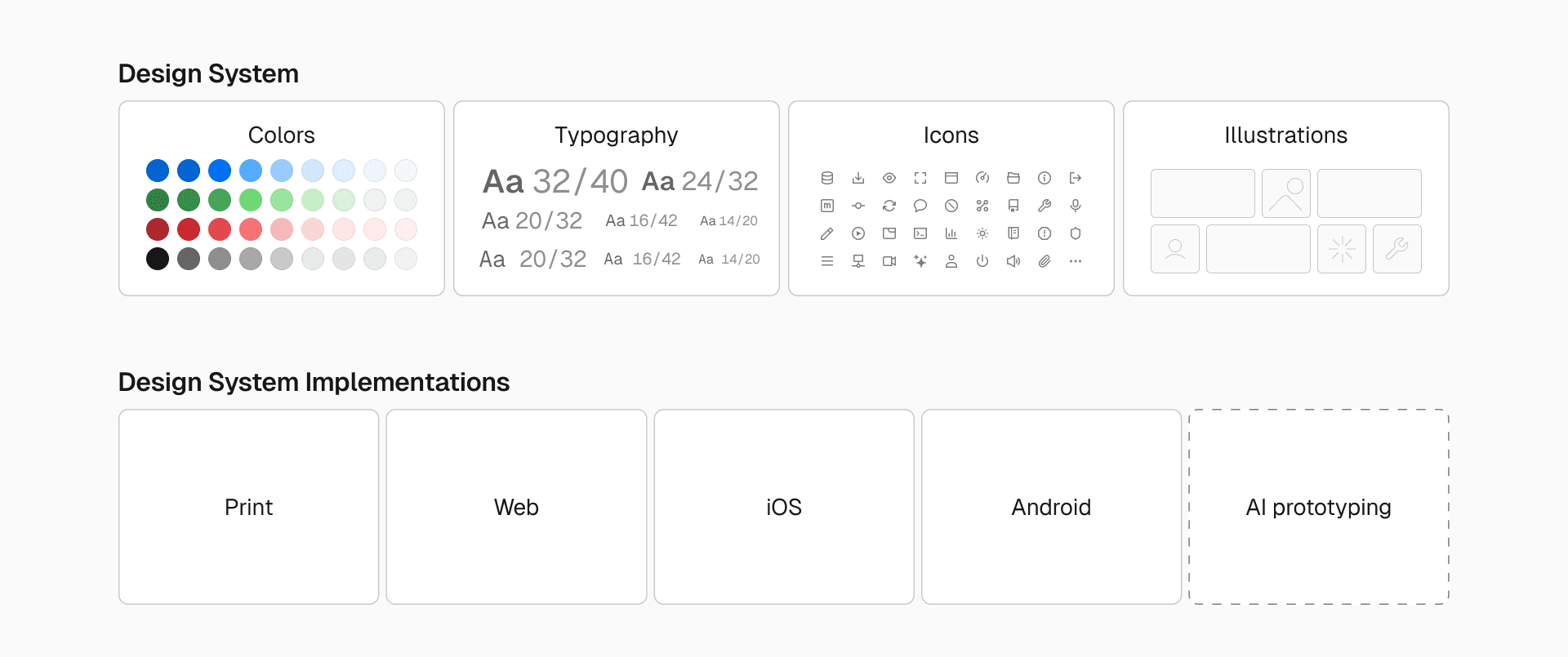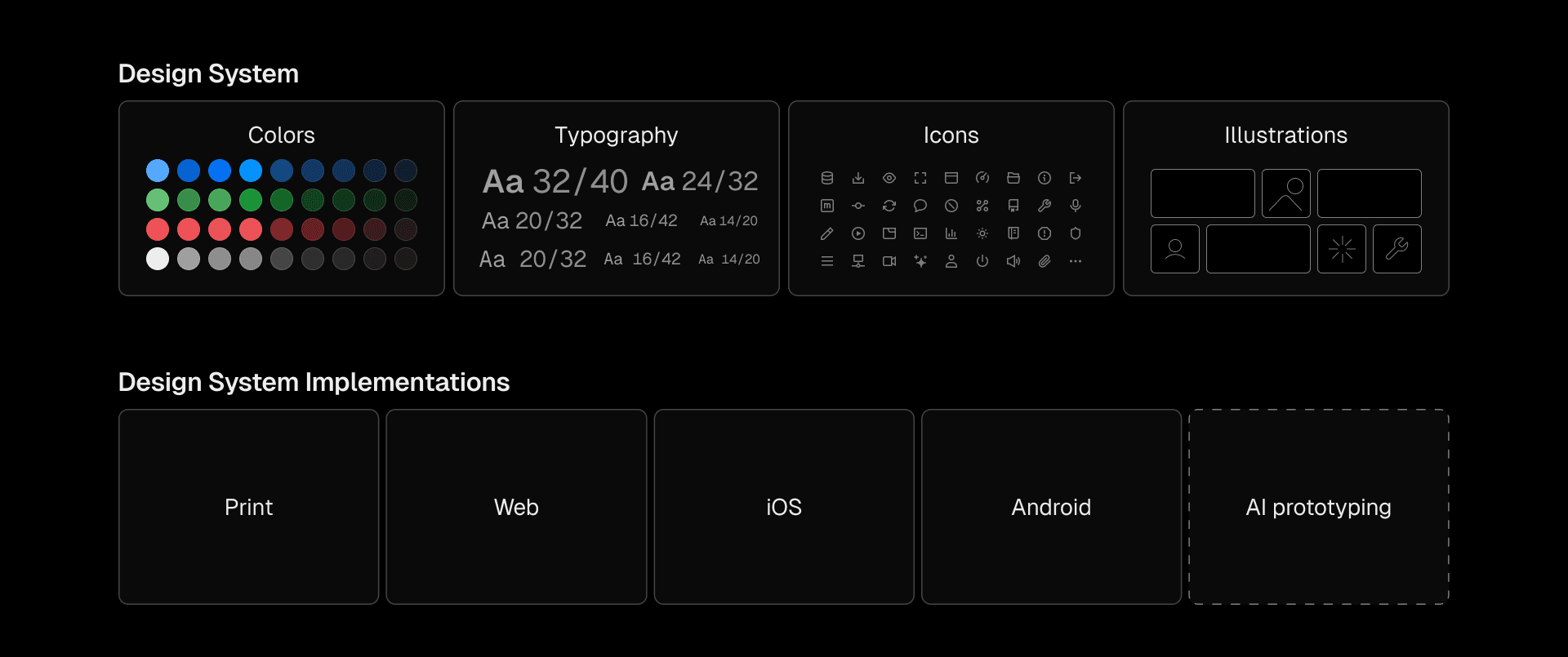5 min read
Why AI-native design systems unlock brand-ready, production-aligned prototyping with v0
Prototyping with AI should feel fast, collaborative, and on brand. Most AI tools have cracked the "fast" and "collaborative" parts, but can struggle with feeling "on-brand". This disconnect usually stems from a lack of context.
For v0 to produce output that looks and feels right, it needs to understand your components. That includes how things should look, how they should behave, how they work together, and all of the other nuances.
Most design systems aren’t built to support that kind of reasoning.
However, a design system built for AI enables you to generate brand-aware prototypes that look and feel production ready. Let's look at why giving v0 this context creates on-brand prototypes and how you can get started.
Link to headingUnderstanding your design system
To build prototypes that feel real, models need more than styled components. They need the full picture of your product and brand.
A design system captures this. It defines the visual language of your product through tokens, patterns, and structure. It includes decisions about color, type, spacing, motion, tone, and more. It reflects your brand and guides teams working across apps and platforms.
Design systems often have multiple implementations. Teams build for iOS, Android, and Web. Design decisions stay consistent, but the code takes different forms. What matters is that each implementation reflects the same underlying rules.
For example, Geist is our design system. It defines the foundations we build with. From there, components are created to match those foundations and shared across teams, apps, and platforms.
A design system helps teams move faster. It removes guesswork and aligns design and engineering. It also gives large language models (LLMs) something to work with. Design systems are context that makes AI prototyping effective. How you implement your design system matters.


Link to headingGiving AI the context it needs to succeed
In AI workflows, the quality of your design system implementation becomes critical. Models need to understand how components are structured, how they are styled, and how they relate to each other in context. Well documented and structured design systems help AI to grasp the full picture.
This is where many teams have trouble. Existing libraries or internal systems often lack the level of detail or structure models need to generate high-quality results.
v0 uses shadcn/ui by default because it's designed with the right primitives and patterns to help models generate real, brand-aligned interfaces that are functional, accurate, and feel like your product. While you can use traditional libraries in AI workflows (v0 works with many of them), you will get better results using a library designed for them.
Link to headingAn AI-native design system
An effective design system for AI prototyping has a few key components:
Open, transparent components
Composable, consistent APIs
Simple, token-based styling
Component libraries often require wrapping components, overriding styles, or dealing with mismatched APIs. Each layer of abstraction makes it harder for the model to predict how pieces fit together, which creates inconsistent output. This slows you down and makes prototyping less impactful. You, or the people you share it with, can't see how it fits in your app as easily.
shadcn/ui is fully open source and built with Tailwind and Radix and used by thousands of companies. It’s meant to be a starter kit for your own design system. Every component can be styled, extended, and structured around your product without extra tooling or hidden complexity. It’s architecture is clear and predictable, which means both people and models can work with it.
Even if you have your own internal component library or use another third-party library, setting up shadcn/ui and v0 to reflect your design system will increase the accuracy and quality of your generations.


Link to headingStart with your tokens
Begin by applying your existing design tokens. Colors, radius, spacing, fonts and so on to a shadcn/ui theme to help your get started quickly. This sets a visual baseline that models can use when generating new UIs.
In v0, you can fine-tune generation using design mode to adjust layout, copy, typography, and more without re-prompting or burning credits. All updates stay native to Tailwind and your design system. It doesn't need to be perfect with this to start. v0 and other LLMs can infer themes from screenshots or partial data.
Link to headingBuild your blocks
shadcn/ui creates a clear structure for your design system using tokens, components, and blocks. This hierarchy fits well with Atomic Design concepts like tokens, atoms, and molecules.
Think of shadcn/ui components like your Buttons, Inputs, and Switches as atoms while more complex blocks like Layouts and Navbars are molecules and organisms. Using this strategy, you can build up useful, reusable blocks for your design system.
Tools like v0 help you go faster. Instead of building every block by hand, in seconds you can generate molecules and organisms that consistent with your tokens.
Link to headingPublish a registry
To scale your system across teams, you need a distribution model. That’s where a shadcn/ui Registry comes in.
Registries let you define and share branded components and blocks in a format models can use. Then, these components and blocks can be opened directly in v0, styled and ready to use. This creates a faster, clearer handoff between design, prototyping, and engineering.
Registries also support the Model Context Protocol (MCP), which keeps model generations grounded. Your design system will not only work in v0, but in tools like Cursor and Windsurf too. A registry becomes the mechanism in which we humans and machines contextualize and use a design system.
You can deploy your own using the Registry Starter. Just map your tokens to the globals.css file and you have a complete AI-native design system ready for you and your team (and models) to use.
Shadcn/ui Registry Starter
Build your own AI-Native Design System using a shadcn/ui Registry and Next.js to accelerate AI prototyping with v0.
Deploy now
Link to headingMore realistic prototypes with an AI-native design system
Design systems built with AI in mind do more than speed up prototyping. They let you generate brand-specific interfaces that look and feel production ready. Structure, tokens, and components become model-friendly inputs. Prototypes feel intentional because they are grounded in the same system your product is built on. You and your team can get on the same page quicker and better visualize what ideas would look like in your app.
We’ve seen this approach work. Many of our customers have combined a shadcn/ui Registry and their design tokens with v0 to build a prototyping workflow that fits how modern teams work. This gives designers and PMs tools to ship higher-fidelity prototypes with faster iteration, better alignment, and cleaner handoffs.
Try v0 for free
Ready to experience the power of v0 in your day-to-day?
Get started